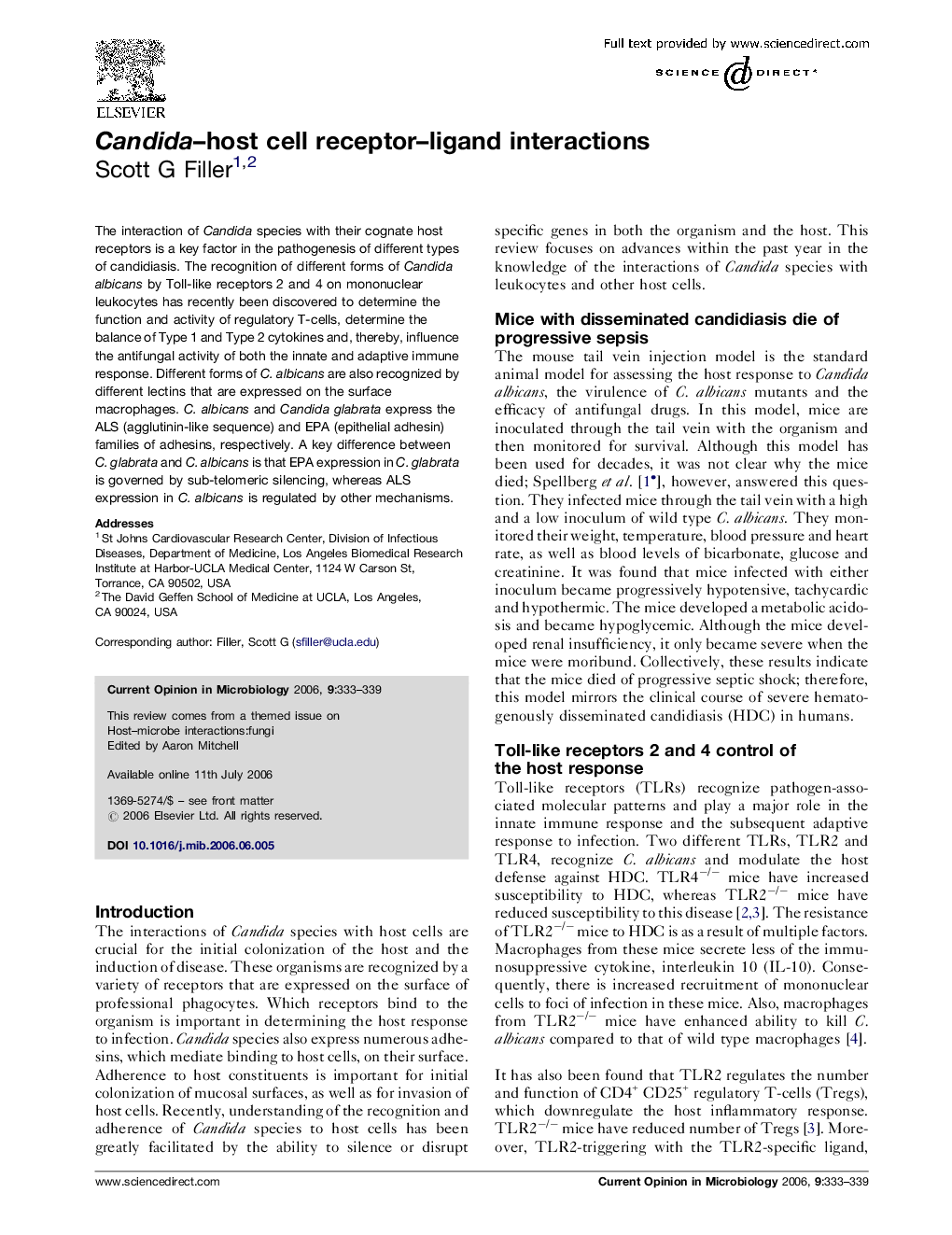| Article ID | Journal | Published Year | Pages | File Type |
|---|---|---|---|---|
| 3399710 | Current Opinion in Microbiology | 2006 | 7 Pages |
The interaction of Candida species with their cognate host receptors is a key factor in the pathogenesis of different types of candidiasis. The recognition of different forms of Candida albicans by Toll-like receptors 2 and 4 on mononuclear leukocytes has recently been discovered to determine the function and activity of regulatory T-cells, determine the balance of Type 1 and Type 2 cytokines and, thereby, influence the antifungal activity of both the innate and adaptive immune response. Different forms of C. albicans are also recognized by different lectins that are expressed on the surface macrophages. C. albicans and Candida glabrata express the ALS (agglutinin-like sequence) and EPA (epithelial adhesin) families of adhesins, respectively. A key difference between C. glabrata and C. albicans is that EPA expression in C. glabrata is governed by sub-telomeric silencing, whereas ALS expression in C. albicans is regulated by other mechanisms.
